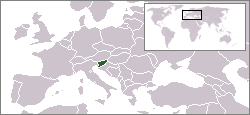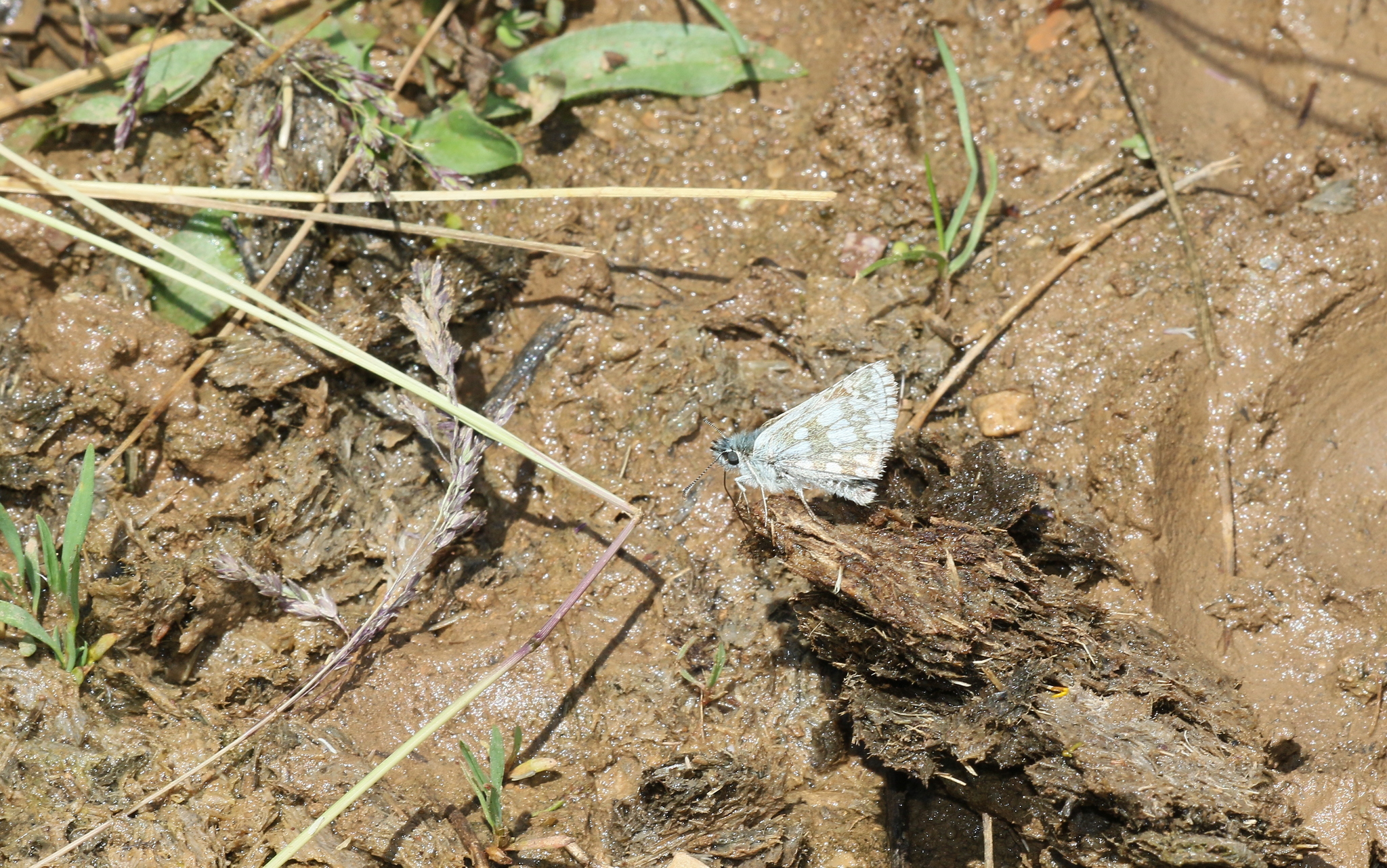|
List Of Lepidoptera Of Slovenia
The Lepidoptera of Slovenia consist of both the butterflies and moths recorded from Slovenia. Butterflies Hesperiidae *''Carcharodus alceae'' (Esper, 1780) *'' Carcharodus floccifera'' (Zeller, 1847) *''Carcharodus lavatherae'' (Esper, 1783) *''Carterocephalus palaemon'' (Pallas, 1771) *''Erynnis tages'' (Linnaeus, 1758) *''Hesperia comma'' (Linnaeus, 1758) *'' Heteropterus morpheus'' (Pallas, 1771) *''Ochlodes sylvanus'' (Esper, 1777) *''Pyrgus alveus'' (Hübner, 1803) *''Pyrgus andromedae'' (Wallengren, 1853) *'' Pyrgus armoricanus'' (Oberthür, 1910) *''Pyrgus cacaliae'' (Rambur, 1839) *''Pyrgus carthami'' (Hübner, 1813) *''Pyrgus cirsii'' (Rambur, 1839) *''Pyrgus malvae'' (Linnaeus, 1758) *''Pyrgus malvoides'' (Elwes & Edwards, 1897) *''Pyrgus onopordi'' (Rambur, 1839) *'' Pyrgus serratulae'' (Rambur, 1839) *''Pyrgus sidae'' (Esper, 1784) *''Spialia sertorius'' (Hoffmannsegg, 1804) *''Thymelicus acteon'' (Rottemburg, 1775) *''Thymelicus lineola'' (Ochsenheimer, 1808) *''Thymel ... [...More Info...] [...Related Items...] OR: [Wikipedia] [Google] [Baidu] |
Pyrgus Cirsii
The Cinquefoil Skipper (''Pyrgus cirsii'') is a species of skipper butterfly (family Hesperiidae). Description This species has a wingspan of 26–28 mm and, typically of its genus, can be very difficult to identify in the field. ''Pyrgus cirsii'' is a medium-sized skipper. There is basically a possibility of confusion with other species of the genus ''Pyrgus'', in particular with ''Pyrgus armoricanus''. Characteristic of ''Pyrgus cirsii'' is a large square discoidal spot on the upper side of the forewing and almost always a second point-like mark over the basal spot on the upper side of the forewing. The hind wing underside is often ocher to reddish brown and stands out from other species of the genus. It is sometimes considered a subspecies of the Carline Skipper (''P. carlinae'') as the two are known to interbreed where their ranges overlap in the Alps but can usually be recognised by the prominent squarish, rather than c-shaped, white spot near the costa of the forewi ... [...More Info...] [...Related Items...] OR: [Wikipedia] [Google] [Baidu] |
Aricia Artaxerxes
The northern brown argus (''Aricia artaxerxes'') is a butterfly in the family Lycaenidae. It is found throughout much of the Palearctic realm. Subspecies *''A. a. allous'' (Geyer, 836 Alps, northern Europe *''A. a. vandalica'' Kaaber & Høegh-Guldberg, 1961 Jutland, Denmark *''A. a. rambringi'' Høegh-Guldberg, 1966 southern Scandinavia *''A. a. opheimi'' Høegh-Guldberg, 1966 southern Norway *''A. a. lyngensis'' Høegh-Guldberg, 1966 northern Scandinavia *''A. a. horkei'' Høegh-Guldberg, 1973 Öland & Gotland, Sweden *''A. a. ukrainica'' (Obraztsov, 1936) south-east Europe *''A. a. inhonora'' Jachontov, 1909 "Rossia ussiaentrali et orientali" *''A. a. sheljuzhkoi'' (Obraztsov, 1935) Caucasus Major *''A. a. turgaica'' (Obraztsov, 1935) south-west Siberia *''A. a. lepsinskana'' (Obraztsov, 1935) Dzhungarsky Alatau *''A. a. transalaica'' (Obratzov, 1935) Ghissar, Darvaz, Pamirs-Alai, Himalayas *''A. a. scytissa'' Nekrutenko, 1985 Tian-Shan *''A. a. sarmatis'' (Grum-Grshimailo, ... [...More Info...] [...Related Items...] OR: [Wikipedia] [Google] [Baidu] |
Aricia Agestis
''Aricia agestis'', the brown argus, is a butterfly in the family Lycaenidae. It is found throughout the Palearctic realm, north to northern Jutland (Denmark) and east to Siberia and the Tian Shan. Subspecies *''A. a. agestis'' southern and central Europe *''A. a. calida'' Chavignerie Sicily, Italy, Asia Minor *''A. a. azerbaidzhana'' Obraztsov, 1935 Transcaucasia, Caucaus Major *''A. a. nazira'' (Moore, 1865) Darvaz, western Pamirs, north-western Himalayas Brown argus (Aricia agestis) female.jpg, female ''A. a. agestis, UK Brown argus (Aricia agestis calida) Italy.jpg, female ''A. a. calida'', Italy Aricia agestis, Brown Argus, Minera, North Wales, May 2017 (34680423115).jpg , larva Description in Seitz ''L. astrarche'' Bgstr. (= ''medon'' Hufn., ''agestis'' Schiff., ''idas'' Gerh. (?), ''nazira'' Moore) (79 k). Above similar to the preceding, L. anteros ">Aricia_anteros.html" ;"title="Aricia anteros">L. anteros deep dark brown, with strongly marked discocellular spot, es ... [...More Info...] [...Related Items...] OR: [Wikipedia] [Google] [Baidu] |
Agriades Orbitulus
''Agriades orbitulus'', the alpine argus, is a butterfly of the family Lycaenidae. It is a high altitude species found in the Alps (ranging from the French Alps to Slovenia and Austria), the mountains of Norway and Sweden, the Urals, the Himalayas and across central Asia. Description The wingspan The wingspan (or just span) of a bird or an airplane is the distance from one wingtip to the other wingtip. For example, the Boeing 777–200 has a wingspan of , and a wandering albatross (''Diomedea exulans'') caught in 1965 had a wingspan of ... is 25–30 mm. The male upperside varies from sky blue to a greyish or steely blue, and is unmarked apart from the narrow black borders and white fringes. The female is brown, often with a slight blue dust suffusion at the wing bases. The fore-wings end in a very pointed apex. Both sexes are clearly assigned by conspicuous white spots on the otherwise pale greyish brown or beige wing underside. The spots under the hind-wing are pure ... [...More Info...] [...Related Items...] OR: [Wikipedia] [Google] [Baidu] |
Agriades Optilete
''Agriades optilete'', the cranberry blue, is a butterfly of the family Lycaenidae. It is found in north eastern Europe, the Alps, North Asia, Japan, Korea and north western North America. The length of the forewings is about 14 mm. The butterfly flies from June to August depending on the location. The larvae feed on ''Vaccinium oxycoccos'', ''Empetrum nigrum'', bilberry and other cranberry and '' Empetrum'' species. Description from Seitz L. optilete Knoch (79 b). This species is quite out of place in the present group of ''Lycaena'' in characters as well as habits, and would be much better placed in a later group than here where it stands in Staudinger-Rebel's Catalogue. Both wings very broad and their outer margins strongly rounded. Male above very dull dark violet-blue, sometimes with a broader black margin, sometimes without black margin. In the female only the basal half of the upperside is dusted with glossy blue scales. Underside dirty dust-grey, the ocelli very ... [...More Info...] [...Related Items...] OR: [Wikipedia] [Google] [Baidu] |
Thymelicus Sylvestris
The small skipper (''Thymelicus sylvestris'') is a butterfly of the family Hesperiidae. Appearance It has a rusty orange colour to the wings, upper body and the tips of the antennae. The body is silvery white below and it has a wingspan of 25–30 mm. This butterfly is very similar in appearance to the Essex skipper (''Thymelicus lineola''). In the small skipper, the undersides of the tips of the antennae are yellow orange, whereas they are black in the Essex skipper. The black area on the lower edge of the upper wings also differs. Like the other orange grass skippers the male has a distinctive black stripe made up of scent scales. Distribution This butterfly's range includes much of Europe (east to the Urals, including Ireland, Britain and Scandinavia), north Africa and the Middle East. It is typically occurring where grass has grown tall. Life cycle and food plants Eggs are laid loosely inside grass sheaths of the caterpillars food plants from July to August. The newly ... [...More Info...] [...Related Items...] OR: [Wikipedia] [Google] [Baidu] |
Thymelicus Lineola
__NOTOC__ ''Thymelicus lineola'', known in Europe as the Essex skipper and in North America as the European skipper, is a species of butterfly in the family Hesperiidae. With a wingspan of 2.5 to 2.9 cm, it is very similar in appearance to the small skipper, ''Thymelicus sylvestris''. They can be told apart by the forward-facing flattish part of the antenna tip: in the Essex Skipper this face is black, whereas in the Small Skipper it is orange or brown. In males, there is a difference in the scent mark. In Essex Skipper this is a fine, straight, short dark line on the forewing, parallel to the wing edge; in the Small Skipper males, this line is bolder and bent. This butterfly occurs throughout much of the Palaearctic region. Its range is from southern Scandinavia through Europe to North Africa and east to Central Asia. It was only identified in the UK in 1889, and its range is expanding both in England and in northern Europe. In North America, this butterfly was accidentally ... [...More Info...] [...Related Items...] OR: [Wikipedia] [Google] [Baidu] |
Thymelicus Acteon
The Lulworth skipper (''Thymelicus acteon'') is a butterfly of the family Hesperiidae. Its name is derived from Lulworth Cove in the county of Dorset, England, where the first specimens in Great Britain were collected in 1832 by English naturalist James Charles Dale. The species occurs locally across Central Europe, Asia Minor and North Africa, where its population is considered stable. Its numbers have declined in Northern Europe, leading to its European status of "vulnerable". Its range in Britain is restricted to the south coast of Dorset, however it is locally abundant and its numbers currently are perhaps at their greatest since its discovery there. With a wingspan of 24 to 28 millimetres, females being larger than males, the Lulworth skipper is a small butterfly, the smallest member of the genus ''Thymelicus'' in Europe and among the smallest butterflies in Britain. Aside from the size difference, the sexes are distinguished by females having a distinct circle of golden ... [...More Info...] [...Related Items...] OR: [Wikipedia] [Google] [Baidu] |
Spialia Sertorius
''Spialia sertorius'', the red-underwing skipper, is a butterfly of the family Hesperiidae. Description The red-underwing skipper can be confused with the species of the genus ''Pyrgus''. The underside has a cinnamon-red to yellowish base tone, while in the ''Pyrgus'' species it is mostly greenish to brownish in color. Since this coloring is less clear in older butterflies (and deviations occur), the characteristic arrangement of the spots on the underside of the hind wing should always be used for the determination. Furthermore, on the upper side of the forewing, a series of small, distinctly bright spots in the submarginal bandage is characteristic, which runs in a regular flat curve to the front edge. The four spots of the post-discal region further towards the wing base are also in a row, while in the species of the genus ''Pyrgus,'' only three are side by side and the fourth is disengaged. The wingspan is 22-26 mm. (MHNT) Spialia sertorius - Bossey, Haute-Savoie, France - ... [...More Info...] [...Related Items...] OR: [Wikipedia] [Google] [Baidu] |
Pyrgus Sidae
''Pyrgus sidae'', the yellow-banded skipper, is a species of skipper (family Hesperiidae). It is found in from the Iberian Peninsula (only an isolated occurrence in the Sierra de Gredos) through southern and eastern Europe , southeast France, the northwestern coastal areas of central Italy, then Istria (Slovenia and Croatia) and the Balkan peninsula, across Turkey, Transcaucasia, to Iran and Afghanistan. East of the Southern Ural mountains the range extends to northwest Kazakhstan and the west of the Tien Shan in the north. ''Pyrgus'' species are usually difficult to separate in the field but ''P. sidae'' is a notable exception. It is the largest member of the genus found in Europe with a wingspan of 32–38 mm and can be instantly recognized by two bold black-edged yellow bands on the underside of the hindwings. The dark brown upper forewings are also boldly marked with numerous large white spots. The adults fly in June and July. The larval food plant is ''Abutilon avicen ... [...More Info...] [...Related Items...] OR: [Wikipedia] [Google] [Baidu] |
Pyrgus Serratulae
The Olive Skipper (''Pyrgus serratulae'') is a species of skipper (family Hesperiidae). Description This is a relatively distinctive species by the standards of the genus, the upperside tending to be plainer than most of its congeners with only tiny white marks on the forewings and almost unmarked on the hindwings. The underside is usually mostly olive-green with paler markings. An oval basal spot on the underside of the hind wing is a mostly well-developed feature. Alpine individuals often have a strong, almost completely reduced pattern of bright points on the upper side of the wing. The wingspan is 24–28 mm which means that ''Pyrgus serratulae'' is a medium-sized ''Pyrgus'' species. Basically, there is a great possibility of confusion with butterflies of the ''Pyrgus alveus'' complex, which can also occur syntopically with ''P. serratulae'', as well as the other species of the genus ''Pyrgus''. Safe separation is possible through the genitals. Range It is a species of th ... [...More Info...] [...Related Items...] OR: [Wikipedia] [Google] [Baidu] |



